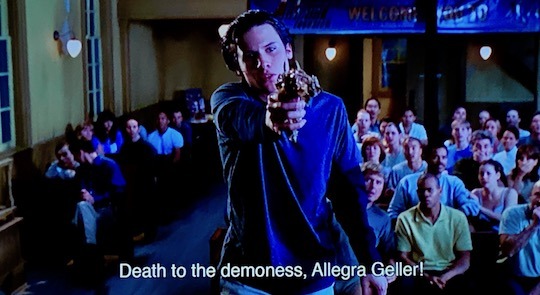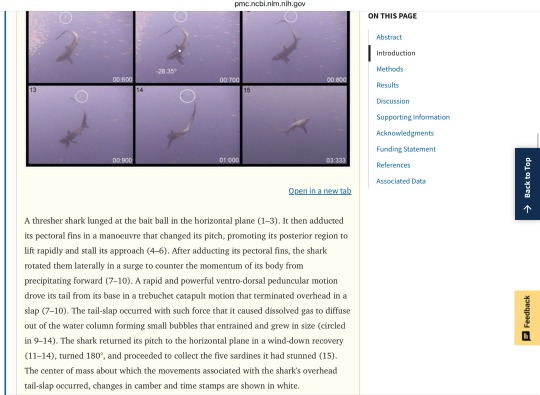#Biomechanics
Explore tagged Tumblr posts
Text
a few days ago, I have found gunshot fish (it would be funny if gunshot fish was its common name since it doesn’t have one yet)

(it says I visit often)

this fish 1.2 cm in length can make 140 dB sounds (by striking its own swim bladder with its rib, if I understood correctly)
but due to how sound works and also how water affects sound it would be less louder from a distance
but still loud
they say specialized ribs and muscles allow the fish to not instantly die when it makes the sound, but I haven’t found much detailed explanation on how exactly they help the fish not shock itself to death with the sound
pistol shrimps have these funny organs called orbital hoods that serve as helmets to protect themselves from their own shockwaves made when they snap their claws, preventing brain damage. but I don’t see any possible organs in this fish that could shield itself from its own noise.
maybe it’s unnecessary because the pistol shrimp’s noise is much louder than D. cerebrum’s, at 210 dB but I still think 140 dB is still dangerous enough for a fish smaller than a penny (also this fish is smaller than most pistol shrimps)
yeah
#bony fish#aquatic animals#wildlife#freshwater fish#freshwater ecology#fish#zoology#ecology#biomechanics#biology#funny fish#fishblr#aquatic wildlife
2K notes
·
View notes
Photo


hr giger bar museum in gruyères, switzerland. ph: u/FourPointsTet on reddit
#hr giger#giger museum#hr giger museum#gruyères#switzerland#gruyeres#photography#fourpointstet#u/fourpointstet#redditor#reddit#design#architecture#interiors#dune#art#sculpture#biomechanics#furniture design#interior design#h.r. giger#museum#harkonnen#house harkonnen#giger bar#species#sil
183 notes
·
View notes
Photo

the space jockey behind the scenes on alien (1979) via retroscifiart on ig
#space jockey#alien#alien 1979#alien saga#ridley scott#hr giger#biomechanics#scifi#horror#practical effects#costume design#creature design#engineers#mala’kaks
163 notes
·
View notes
Text

The dissection begins! I’m joined by Pasha van Bijlert, a PhD student at Utrecht University in The Netherlands. You can follow along on Instagram or Facebook. Nothing in the world could convince me to use Tumblr Live. ;)
382 notes
·
View notes
Text

H.R. Giger, Biomechanoid No. 100, 1969
237 notes
·
View notes
Text

source: bishopsbox
HR Giger, Li II, 1974
36 notes
·
View notes
Text


People with weird organic guns making death proclamations in David Cronenberg movies: Videodrome (1983) and eXistenZ (1998)
103 notes
·
View notes
Note
This may be a dumb question but
Do we know how flexible sauropod necks were? I’ve seen them often depicted as kinda stiff, like a giraffe’s.
But birds with longer necks, like waterfowl, are *incredibly* flexible.
So we’re sauropods similar? Or do we think their size would restrict flexibility in favor of stability?
Thanks!
Flexibility in the neck is all about the number of neck vertebrae
Giraffes, like all mammals, only have 7 neck vertebrae, making their necks very inflexible
Swans, an example of a long necked waterbird, have up to 25 neck vertebrae
Different sauropods have different numbers of neck vertebrae, but some have as many as 19
So not quite as flexible as waterfowl, but certainly more flexible than giraffes!
90 notes
·
View notes
Text

h. r. g i g e r biomechanics
19 notes
·
View notes
Text
“A RAPID AND POWERFUL VENTRO-DORSAL PEDUNCULAR MOTION DROVE ITS TAIL FROM ITS BASE IN A TREBUCHET CATAPULT MOTION THAT TERMINATED OVERHEAD IN A SLAP” 🗣️ 🗣️🔥

source: https://pmc.ncbi.nlm.nih.gov/articles/PMC3707734/ (Thresher Sharks Use Tail-Slaps as a Hunting Strategy)
#marine biology#aquatic animals#fish#wildlife#biology#ecology#funny fish#cartilaginous fish#sharks#i love sharks#shark#ichthyology#elasmobranch#marine animal#marine life#marine fish#biophysics#biomechanics#thresher shark
7 notes
·
View notes
Text
The rotating shoulders and extending elbows that allow humans to reach for a high shelf or toss a ball with friends may have first evolved as a natural braking system for our primate ancestors who simply needed to get out of trees without dying. Dartmouth researchers report that apes and early humans likely evolved free-moving shoulders and flexible elbows to slow their descent from trees as gravity pulled on their heavier bodies. The paper, "Downclimbing and the evolution of ape forelimb morphologies," is published in Royal Society Open Science. When early humans left forests for the grassy savanna, the researchers say, their versatile appendages were essential for gathering food and deploying tools for hunting and defense.
Continue Reading.
100 notes
·
View notes
Photo

by Mirko Lalit Egger
240 notes
·
View notes
Text
Curve Ball
Epithelial cells – those lining cavities such as the gut as well as covering organs – packing into tissue take on a 3D shape dubbed scutoid enabling tissue curvature. Here, by studying sea star embryos, the combined influence of cell density, tissue compaction and cell proliferation on scutoid formation and resulting epithelial architecture is revealed
Read the published research article here
Video from work by Vanessa Barone and colleagues
Center for Marine Biotechnology and Biomedicine, University of California San Diego, La Jolla, CA, USA; Instituto de Biomedicina de Sevilla (IBiS), Hospital Universitario Virgen del Rocío/CSIC/ Universidad de Sevilla, Seville, Spain
Video originally published with a Creative Commons Attribution 4.0 International (CC BY 4.0)
Published in Development, May 2024
You can also follow BPoD on Instagram, Twitter and Facebook
26 notes
·
View notes
Text
New painting reveal - Malign, acrylic on canvas
5 notes
·
View notes
Text
Okay, Tumblr:
What, if any, advantages in movement would a faun or satyr-like creature (hooved, bipedal, cloven hoof if that makes a difference) over a normal human?
3 notes
·
View notes
Text
we know how 2 do stretches that help w the shorted pained breathing, i have 2 find some combo 2 help with lower back pain. like it sucks waking up achey and being able 2 rehab urself is gr8. pushing for anatomy study after this lunar cycle. lets work towards the prospect of analog articul8n recalibr8n
#my calves/feet get so tight from working that if i dont attend 2 them like 2/week i can feel the tension lattice into my hips#biomechanics
3 notes
·
View notes